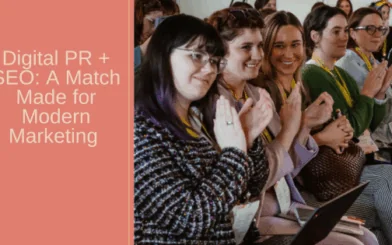Is your audience wearing blinders or goggles? The answer will determine what channels you should pursue for pay-per-click (PPC) advertising, and how you should use them.
PPC advertising continues to evolve at an exciting rate. Platforms like Facebook and Google continue to add more granular options with the goal of finely-tuning campaigns. Now that mobile use is the default way of accessing the web, it’s not just about reaching a specific person; it’s about reaching them at a specific time and place while they’re using a specific device (and even a specific app).
Blinders or Goggles
To help us process the dizzying array of targeting options that are available, it helps to think about them in two broad categories: blinders or goggles.
Blinders focus the vision on a singular point. A user with blinders on is of a mind to accomplish a specific task, and thanks to the saturated media environment they’re very good at tuning out everything that isn’t relevant to that task.
Goggles, by contrast, enable a wide view – allowing the wearer to take in the most of their surroundings. The best goggles offer good peripheral vision so that we can take in all of the possible sights around us.
Recent research at Duke University has uncovered a fascinating insight about the human brain – with the right triggers, it can jump into a more focused state to ignore distraction. When the caudate nucleus lights up on an fMRI, we’re in an enhanced state of focus. These users are likely wearing blinders.
Millennials check their phones 157 times per day on average (and the rest of us are likely similarly inclined). Google calls the act of reaching for a smartphone to accomplish a task a “micro-moment.” A recent study by the University of Michigan found that 62 percent of people who are waiting (in line, at the airport, for a bus, etc.) use their phones to pass the time. These users are likely wearing goggles.
Blinders & Goggles
What does this mean for PPC advertising? Quite a bit.
PPC search ads are often best targeted at users with blinders on. Performing a search of Google is an active process Within the last year, Google has added a variety of new features to help advertisers maximize their budgets. Device bidding now allows you to raise or lower what you pay depending if a user is on a phone, tablet or desktop – the device they’re on is a good indicator of their vision (mobile users likely have blinders on, desktop users – goggles). They also eliminated right-column ads for all but two situations, likely because they were less effective to users wearing blinders.
Conversely, many of Facebook’s newest features will appeal to users with goggles on as they’re designed to draw in those looking for content to pass the time. Dynamic ads, slideshows with text overlays, broader reach of their display ad network, and Instagram story ads are all options to appeal to a more passive audience looking to be delighted or informed.
Before you even begin writing copy or picking images for PPC ads, step back and think about your goals and whether your audience is wearing blinders or goggles. You’ll save money and improve your results.




